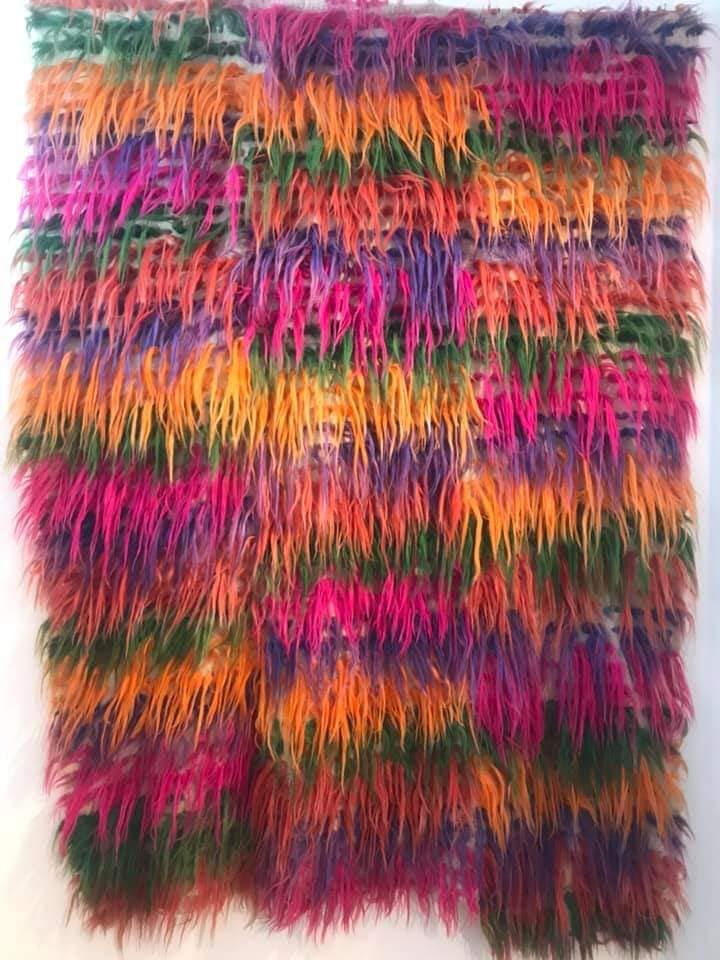The Textile Museum is located in the Hunedoara commune of Băița, being a unique attraction in Romania (the first of its kind in the country) and even in Eastern Europe. It was officially inaugurated in 2018, in the center of the commune, being a private museum belonging to the Zaharia family, more precisely to Mrs. Florica Zaharia a Romanian from Hunedoara county who was, half of her life, director of the Textile department within the Metropolitan Art Museum of New York. Basically, the whole family takes care of the museum (Florica, Ana and Romulus Zaharia-FARZ). The collection presented at the museum, formed over four decades, includes thousands of pieces and textile instruments from Romania, Eastern and Central Europe, Western Europe, the Middle East, India, Central Asia, Japan, China, Southeast Asia, Africa, Oceania and America. The collection, formed over four decades, includes approximately 12,000 pieces and textile instruments. The focus of the collection is on the textile materials and techniques used to make items of clothing unique around the world. The exhibition includes pieces from different cultures including fabrics made from a wide variety of textile fibers, textile instruments, suits, accessories and textiles for interiors.
The museum has three locations
The main location of the museum, Building A, is in a house built in the center of Băiţa commune in 1857. Building B, where the offices’, a conservation laboratory, the conference room and an Art Café are located, is a building from the '60s. , which was the local department store. Building C of the museum, displaying the typical domestic textile production of Hunedoara county, exemplified by objects and a garden focused on textile plants, it is in a peasant household from Hărţăgani village. The household has five constructions, three of them being dated and attributed to Tripon Petru, 1902, 1912, and Popa Aron, 1936.
Research, collection and sharing of the collection, the mission of the museum
The mission of the first textile museum, opened in Romania, includes the preservation, collection, research and sharing of the collection and other resources with specialists and the general public. The museum's activity focuses on Romanian and Eastern European textile materials, but also on the related textile technologies to be integrated. The activity of the museum is a complex one, considering the fact that the emphasis is also on research and professional interaction between young professionals from the Romanian and international community and experts.
A collection of 12,000 pieces
From the opening of this textile museum, on the initiative of a local woman who lived a good part of her life in America, Florica Zaharia, declares: “The museum is a place where we want to build a bridge between cultures, where Romanian and the Eastern European culture can be found in a global concept. It's not easy, but we managed to find three locations for the museum: one is the former department store building, built in 1960, which we refurbished, another is the house in front of Băița City Hall, from the 19th century, and the third, about 100 years old, is in the village of Hărţăgani. Each represents a different goal. I must thank the institution that has played an important role in this project and in our training. That’s the Metropolitan Art Museum in New York, where I've worked for almost half my life. They showed their support in different ways and sent us their messages. Colleagues from the Department of Textile Conservation wished to donate the plaque we are unveiling today and I am delighted. Another support of the Metropolitan Museum is a major donation of 1,871 objects. These objects in the museum come from different cultures, not only from Romania. The pieces come from almost 100 countries and together form a collection of almost 12,000 pieces. We want to use this material and the museum's specialized library for educational programs, research programs, and exhibition programs and publications. ”
Who is Florica Zaharia
Dr. Florica Zaharia is a renowned specialist in materials conservation. She is originally from Hărţăgani, Băiţa commune and, after studying at the Pedagogical High School, she attended the Popular Art School, then enrolled in the courses of the “Nicolae Grigorescu” University of Arts in Bucharest. She specialized in decorative arts, upholstery and textile structure. She decided to leave the country in 1988 and arrived in the United States. Her experience and also the pieces created by her opened doors to the famous "the Met", on 1000 Fifth Avenue. Thus, the woman from Hunedoara became part of the Department of Textile Conservation at The Metropolitan Art Museum in New York, where she worked as a restorer in the institution's laboratory. In 2003 she became the head of this department. After the experience in the USA, she decided to return to her native home, to present the FARZ collection, as the suite of exhibits gathered by Florica, Ana and Romulus Zaharia is known, the last two being the artist's daughter and husband.
Photo source: Facebook / Textile Museum



























